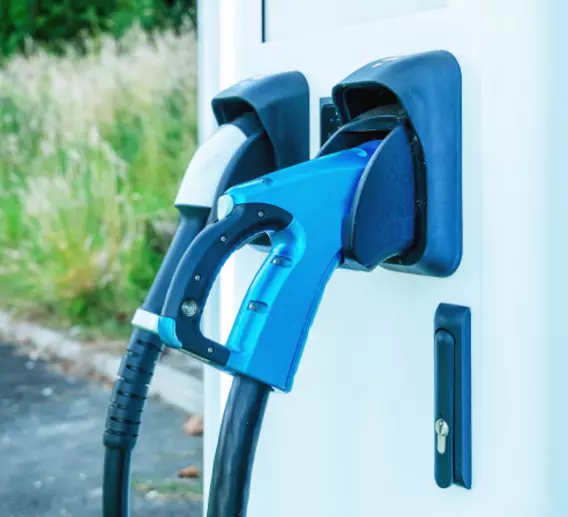Charging ahead with electric vehicles in freight transportation
As the logistics industry moves toward more sustainable practices, electric vehicles (EVs) are taking center stage. But while EVs help reduce carbon emissions and require less maintenance than traditional vehicles, transitioning to an electric fleet comes with its challenges.
From infrastructure needs to regulatory demands, the path to full integration is complex. However, many companies, including ArcBest, are exploring innovative ways to incorporate EVs into their sustainable transportation efforts.
Why EVs are gaining ground in freight transportation
Switching to electric vehicles offers a lot of promising benefits, both for the environment and daily logistics operations:
-
Lower CO2 emissions: Transportation accounts for 29% of total CO2 emissions, according to the American Transportation Research Institute. EVs produce zero tailpipe emissions, making them crucial to reducing the industry’s overall carbon footprint and improving air quality.
-
Minimal maintenance: EVs are simpler to maintain than traditional combustion engines. With fewer moving parts and no need for engine fluid changes, they can reduce upkeep costs. Regenerative braking systems also cut down on the wear and tear on brakes.
-
Reduced operating costs: Because EVs save on fuel and maintenance, they can help companies manage costs in the long run.
-
Improved driver experience: EVs are quieter and smoother, with less vibration and noise. Many drivers prefer the ride of an EV over a traditional truck.
-
Regulatory compliance: States like California are setting the pace with regulations requiring the transition to zero-emission vehicles. The Advanced Clean Fleets (ACF) rule mandates the full adoption of EVs in California by 2045, with other states likely to follow.
Full EV integration will be complex
While the benefits are clear, the transition presents some challenges:
-
Infrastructure and charging: Most areas don't currently have the electric infrastructure to charge entire fleets. To make EV use widespread and practical, charging stations need to be as accessible as gas pumps.
-
Time to charge and vehicle range: EVs' limited range and the time required to charge them make it difficult to use them for long distances. Currently, EVs are most effective on shorter, predictable routes where they can quickly return to a charging hub.
-
Sourcing of metals and battery recycling: EV batteries rely on rare metals like lithium and cobalt, which are difficult and costly to mine. There are also still questions about the best way to recycle or repurpose these batteries once they’ve reached the end of their life cycle.
How ArcBest is preparing for the EV shift
With a strong focus on customer service, innovation and sustainability, ArcBest is embracing the industry shift by integrating EVs into our operations.
Straight trucks
We’re piloting electric straight trucks, and plan to continue integrating them as charging infrastructure expands.
Forklifts and yard tractors
Our electric yard tractors and forklifts are already operational at many service centers. Since they can be charged when not in use, they’ve become a key part of our operations.
Shaping the future of freight with EVs
Despite the current limitations of EV technology, we understand that the future of freight transportation includes electric vehicles. And we remain committed to driving positive environmental change and leading the way toward a more sustainable supply chain.
Our fleet services, innovation and sustainability teams are partnering with manufacturers, investing in infrastructure and finding the best ways to scale EVs across our fleet. The road to full adoption (in California and beyond) will be a process, but we’re committed to learning and adapting as we go.







